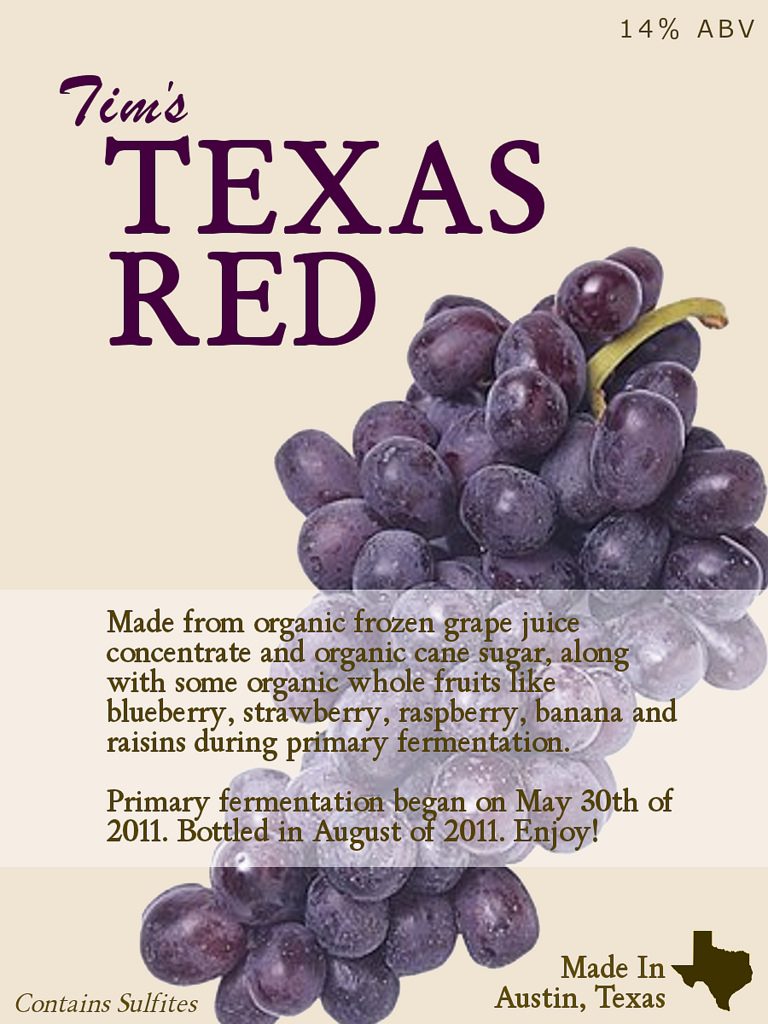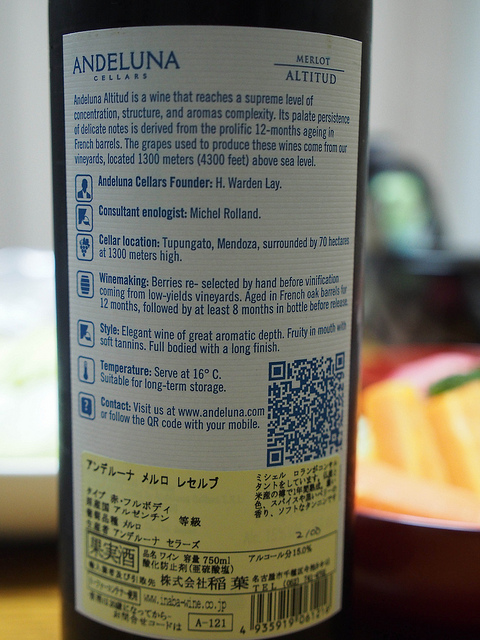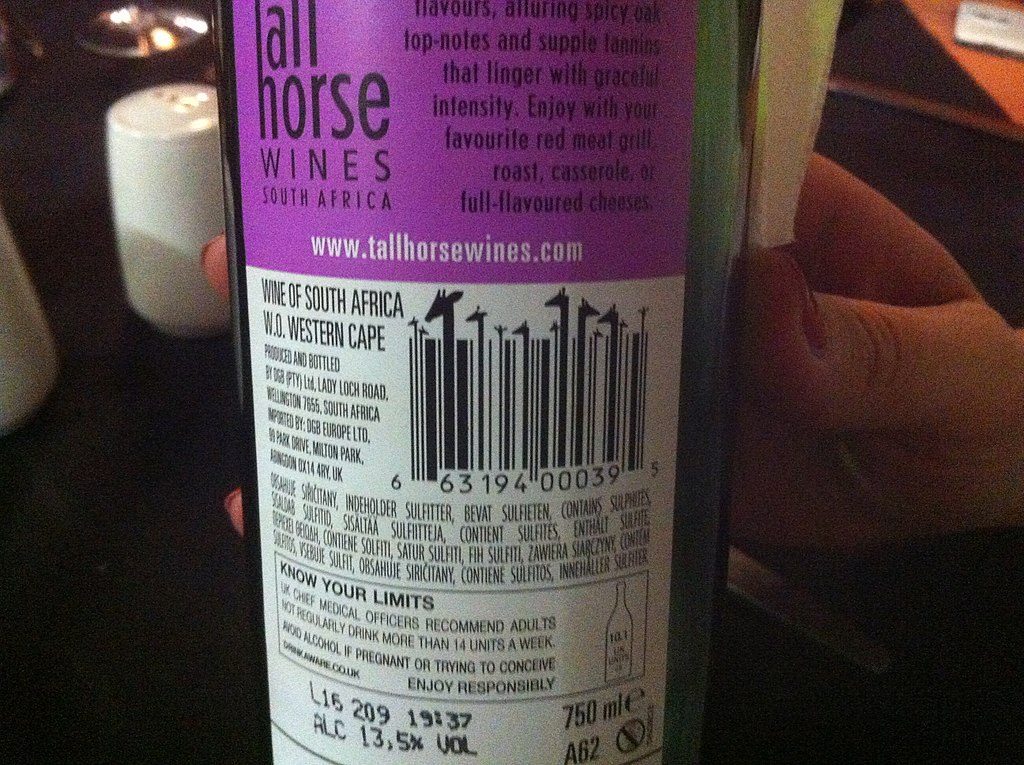The concept of putting nutrition and ingredient information on food labels is not new, however, in recent years, there has been a lot of pressure to expand these label requirements to alcoholic beverages, including wine. In the EU and the US, consumer advocate groups and other entities are encouraging government officials to draft and pass legislation to make nutrition and ingredient labels for wine and other alcoholic beverages.
A recent letter from the Center for Science in the Public Interest, the Consumer Federation of America, and the National Consumers League to the TTB encouraged the entity to come up with a new proposal for such labels, because “consumers of alcoholic beverages deserve the clear, consistent labeling that has long been available to other beverages”. (Read the letter here, as well as a recent wine-searcher article covering the topic here).

The wine industry, on the other hand, has been generally opposed to the ideal of mandatory labeling of nutrition and ingredient information on wine. In 2014, The Wine Curmudgeon interviewed Bonny Doon Vineyard winemaker Randall Graham who said that that wineries “don’t want people to know the various tricks and certain stylistic effects that they use on their wine.” (Read The Wine Curmudgeon’s 2014 article here, as well as a recent follow-up article here).
So, one side thinks nutrition and labels are a good thing for wine, while the wine industry is generally much cooler to the idea. What would happen if ingredient and nutrition labels became mandatory for wine? Would people start buying less of it? More? Would anyone actually care?
Nutrition Labels and Food
While the effect of nutrition and ingredient labels on wine is not understood, there has been significant research done in food. Some research indicates that what consumers SAY about these kinds of labels doesn’t predict their ACTUAL purchasing behavior. So, the consumer might say nutrition and ingredient labels negatively influence their opinions on a given product, but when it comes to their actual purchasing behavior at the grocery store, they aren’t purchasing that particular product any less than they did before nutrition and ingredient labels on food became mandatory.
Studies have shown that consumers, in general, are interested in knowing what’s in their food as well as it’s nutritional content, though this interest varies.
Nutrition Labels and Wine
In regard to nutrition and ingredient labels in wine, most of the studies to date have utilize direct approach methods, meaning participants were directly asked about nutrition and ingredient labels on the wine bottles, potentially biasing the results. Keeping the experimental design in mind, studies have shown that, in general, consumers are interested in seeing nutrition and ingredient information on alcoholic beverages. However, even though consumers say they would like this information, studies have shown that they don’t understand what they are reading when they are presented with these details.
Since many consumers see wine as a “natural” product, one Australian study found that consumers saw the nutrition and ingredients listed on the wine bottle negatively. On the other hand, another study found that showing the calorie information on an alcoholic beverage actually led consumers to reduce the amount of food they ate beforehand so that they could still drink the same amount of alcohol, which would possibly result in increased intoxication.
Regarding what influences someone to buy a bottle of wine, the back label generally isn’t high up on the list. So, if what’s on the back label isn’t that important, then placing nutrition and ingredient information on the back label might not matter much. Some wineries are already making nutrition and ingredient information about their wines available, albeit through links or QR codes on the back label. Despite consumers stating their interest in this information, studies have shown very few people follow these links or QR codes to read this information. Consumers say they care about the information for wine, but do they really?

Experimental Design Hurdles
One problem with many of these studies is that they use methods that utilize direct statement approaches. For example, they might specifically ask participants “how do you feel about ingredient labels on wine” or “would you purchase a bottle of wine that has nutrition information listed on the label”. Studies have shown that this kind of direct approach does not always translate to real-world purchase behavior, and that more indirect or observational methods would be more appropriate for determining actual consumer purchase behavior. By directly drawing attention to the label, the consumer might pay more attention to it than they would have in a real-world setting and thus are already somewhat bias.
In food, those studies that have utilized indirect methods such as eye-tracking technology in a retail setting have shown that food nutrition and ingredient labeling has little influence on what consumers purchase. Would we see similar results for wine? Would consumers even care about nutrition or ingredient labels on wine bottles?
A new study, available online and in press in a future issue of the journal Wine Economics and Policy, aimed to use an indirect/observational approach to determining the effects of nutrition and ingredient labels on wine, and what sort of effects they might have on consumer purchase behavior.
Brief Methods
This study utilized focus groups and observational methods for determining how participants reacted to nutrition and ingredient labeling on wine (indirect approach).
Participants were not told what the study was about until well after the observational choice portion of the experiment, to remove any potential bias of their selections.
Focus groups were run in Köln, Mainz, and Tübingen Germany during September 2017, with each group having 6 to 8 participants (21 participants total).
Participants were told they were engaging in a moderator-led discussion on general wine purchasing behaviors, but they were not told it was related to wine labels.
First, participants were asked to discuss what was most important to them when making a wine purchase. Then, each participant had 3 bottles of wine placed in front of them and were asked to choose which one they would purchase.
The wines were German Rieslings, with different front labels and controlled back labels. All bottles had the mandatory items (producer, alcohol, volume), but had different “extra” information included. One bottle had elements similar to a wine already on the market. A second bottle provided nutritional information instead of detailed tasting notes. The third bottle provided nutritional and ingredient information. Participants were recorded and monitored while looking at the bottles, and whether or not they looked at the back label.
After participants chose the wine they would purchase, they came together to discuss why they chose that particular bottle. If they didn’t say anything about the nutrition or ingredient information, the moderator then asked them how important back label information was to them in general.
Next, participants tasted the wines and were asked to estimate how many calories were in the wine, as well as estimate the caloric value of other alcoholic beverages. After, this was discussed in the focus groups where they were asked whether they had previously researched nutrition information for wine, and whether their decision to purchase a wine would change if this information was readily available on the label.
A fourth bottle was shown to participants that contained a highly detailed ingredient list and were asked whether they understood the information given and if this information would change their decision to purchase the bottle.
Participants were required to have some experience with wine – specifically, they were required to consume wine at least twice per month, but not be experts, in order to participate in the study. Because of this narrower selection criteria, the participant sample pool was not representative of the entire German wine drinking population. The researchers assumed these participants would be more interested in label information than a wine novice who doesn’t purchase wine very often, so the results of this study would theoretically represent a more sensitive group.
Video recordings were created for the entire study and were analyzed for whether participants looked at the back label, noticed the nutrition or ingredient information provided, and if they were willing to purchase any particular bottle of wine.
Selected Results
- 81% of participants at least scanned the back label quickly.
- 1/3 of these participants later said they noticed nutrition/ingredient information when it was brought to their attention during the group session.
- 29% of participants noticed the nutrition/ingredient information without being asked about it.
- Those who noticed the nutrition/ingredient information at first reacted with feelings of “insecurity, confusion and incomprehension”.
- 62% of participants said they did not look at back label information when they were asked about it directly.
- 24% of participants said they looked at the back label sometimes, depending upon the occasion.
- 14% of participants said they looked at the back label information when they were looking for food pairing or other information about the winery.
- In terms of acceptance of legally required information, other than alcohol content participants did not mention if this information played any role in their purchase decisions. In fact, one participant even said “I’m not even reading [this information]”.
- Regarding nutritional content, all participants said they never considered or looked into energy values/caloric values of wine.
- When guessing the caloric value of white wine, red wine, beer, and G&T’s, 76% of participants overestimated the values.
- Comments such as “If you do not have to count calories then you do not pay attention to this” were frequent.
- Interestingly, some participants said they might drink MORE wine or other alcoholic beverages upon learning that a single unit of the beverage contains fewer calories than they thought.
- 100% of participants believed calorie information on a wine would not lead to less wine consumption, since wine is a “special treat rather than some sort of staple or basic food”.
- Though most participants didn’t notice nutritional information on the bottles, later they said that it would be important information for those with special dietary or allergy needs.
- When they were asked directly, 50% of participants said they did not support putting nutritional/ingredient information on the bottles.
- The ingredient list on the third bottle led to 76% of participants giving negative statements like “This must mean the harvest was not good enough”, etc.
- Basically, ingredient lists on the bottles resulted in confusion and uncertainty.
- 29% of participants understood at least some of the ingredients listed, while none of the participants understood all of them.
- 62% of participants viewed wine as a “natural” beverage and put high levels of trust in the wine industry.
- After being shown bottle #4 with extensive nutritional and ingredient information, participants no longer viewed wine as a “natural” product.
- 2/3 of participants wondered why certain ingredients were even necessary in wine production.
- 1/3 of participants still saw wine as a “natural” product even after seeing the ingredients list.
- Most participants didn’t see any benefit to having nutritional and ingredient information listed, though 38% of them supported the idea for transparency reasons.
- 24% of participants said nutritional/ingredient information on wine bottles was unnecessary and that they’d rather see more tasting notes or info about the winery on the label instead.
- 2/3 of participants said they would not exclude a wine from their purchase decisions based on nutritional/ingredient information.
- 1/3 of participants said they would prefer to buy the wine with the shortest ingredient list.
Conclusions
Overall, the results of this study were very complex and interesting. First, it seems to highlight the importance of experimental design, as clearly direct approaches yield different results than indirect approaches. For example, in this study, when participants were observed selecting a wine bottle to purchase, only 1/3 of participants actually noticed the back label information, while when directly asked about it, most saw the additional nutritional/ingredient information in a negative light. Basically, they might SAY nutritional/ingredient information is bad, but when it comes down to it and they are looking to buy a bottle of wine, they don’t give a hoot about it.
In order to reduce some of the negativity surrounding the confusing and intimidating ingredients lists, the researchers of this study suggested greater transparency and education from the wine business to consumers. Be upfront about what’s in it and educate consumers more on why certain ingredients are used in the winemaking process. That way, when confronted with mandatory ingredients information on a bottle, the list comes as less of a shock to the consumer. Additionally, the researchers suggested that using fewer ingredients may be beneficial, since some of their results suggested that consumers might be more likely to purchase a wine with fewer ingredients listed.
In terms of nutritional content, all participants in the study said they didn’t care about the number of calories a wine had, as wine is a special treat and not a food item necessary for sustenance. Interestingly, most of the participants actually overestimated the number of calories in the wine and thus stated that they might actually consume MORE wine than they would have otherwise simply due to the fact that wine is “healthier” than they first thought.
In summary, despite the negative statements made by participants when directly asked about nutritional/ingredient information on the back label of a wine bottle, the indirect/observational part of the experiment showed that this information doesn’t really matter and that this information wouldn’t change a consumers’ purchase behavior.
Study Limitations
As interesting as these results are, it’s important to point out a few [major] limitations. First, the sample size was teeny tiny…only 21 participants. Second, these participants were all German, so results may not be comparable to what happens in other markets like the UK, USA, or other places. Next, the sample wasn’t even representative of general German wine consumers either. The sample represented a smaller subset, that according to the researchers would likely be a more sensitive group (though without the actual comparison to wine novices is impossible to say with confidence). Finally, though this study had the benefit of using indirect observations methods, it still wasn’t in a true retail setting, so comparing to what real consumers do in a real-world setting is still a stretch.

Despite these limitations, as an exploratory study, the results are certainly promising. When observed in a close to real-world purchase scenario, most people did not care about back label information (and thus never noticed the nutritional/ingredients lists). Additionally, since many participants actually overestimated the caloric value of wine, being aware that the wine contains fewer calories than they thought might result in greater wine consumption overall.
In a nutshell, even though this study can’t be scaled up to the general public, the results are still promising. Perhaps having nutritional/ingredient information on the back label of wine bottles isn’t as detrimental as the wine industry might think. Greater transparency about how wine is made and exactly goes into wine bottles might help quell any negative associations consumers might have with the ingredients list.
Source:
Pabst, E., Szolnoki, G., Loose, S.M. 2019. The effects of mandatory ingredient and nutrition labelling for wine consumers – A qualitative study. Wine Economics and Policy: https://doi.org/10.1016/j.wep.2019.02.001


5 comments for “The Effects of Mandatory Wine Label Nutritional and Ingredient Information on Purchase Behavior”